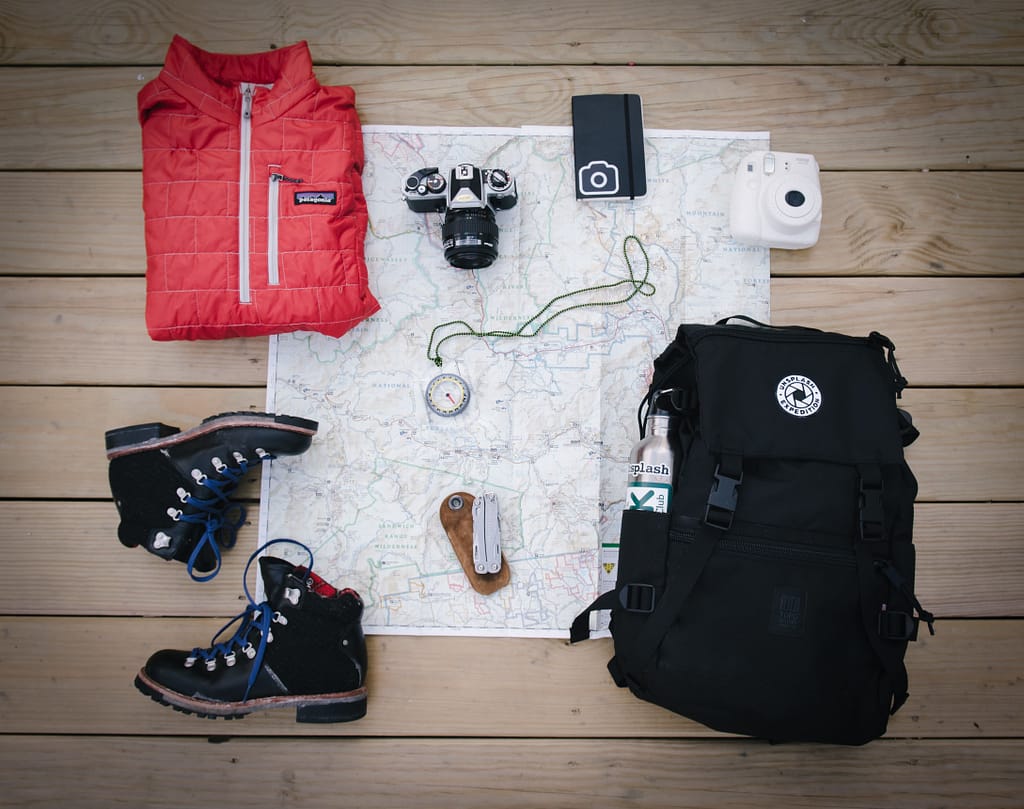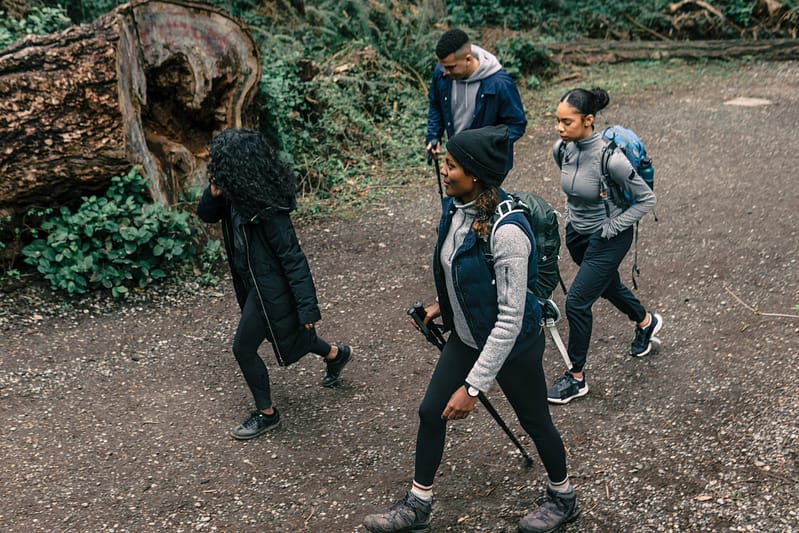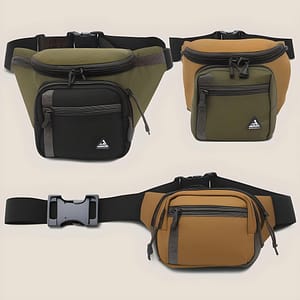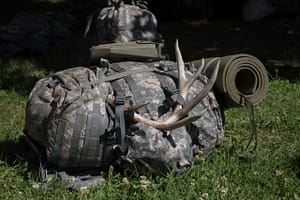Greetings, future trail warriors! So, you’ve decided to dip your toes into the vast and exhilarating world of hiking. Whether you’re here because your adventurous spirit is nudging you to explore the great outdoors or you just want a reason to wear cool hats and call it “gear,” you’re in for a treat. Welcome to hiking gear for beginners!
Embarking on a hiking journey is like entering a secret society of nature enthusiasts – and guess what? You’re the newest recruit! But before you conquer mountains and become one with the trails, let’s talk about the unsung heroes of the hiking world: the gear. Fear not, dear beginner; we’re here to guide you through the enchanted forest of hiking equipment and demystify the jargon.
What type of hiking gear do I need for my first trip?
When embarking on your first hiking trip, it’s important to have the right gear to ensure a safe and enjoyable experience. Here is a list of essential hiking gear for beginners:
- Hiking Boots: Invest in a good pair of hiking boots that provide ankle support and have a sturdy sole for traction on various terrains.
- Backpack: Choose a backpack that is comfortable to carry and has enough space to hold all your essentials. Look for one with adjustable straps and multiple compartments for easy organization.
- Clothing: Dress in layers to accommodate changing weather conditions. Opt for moisture-wicking and quick-drying fabrics to keep you comfortable. Don’t forget a waterproof jacket and pants in case of rain.
- Navigation Tools: Carry a map and compass to help you navigate the trails. Additionally, a GPS device or smartphone app can be useful for tracking your progress.
- Water and Snacks: Stay hydrated by carrying enough water for the duration of your hike. Pack lightweight, energy-rich snacks to keep you fueled throughout the day.
- First Aid Kit: Be prepared for any minor injuries or emergencies by carrying a basic first aid kit. Include items like band-aids, antiseptic wipes, pain relievers, and blister treatment.
- Sun Protection: Protect yourself from the sun’s harmful rays by wearing a hat, sunglasses, and sunscreen with a high SPF. Consider using lip balm with SPF as well.
- Trekking Poles: Trekking poles can provide stability and reduce strain on your knees and joints, especially when hiking on uneven terrain.
- Headlamp or Flashlight: Always carry a reliable light source, even if you plan to finish your hike before dark. It can come in handy in case of unexpected delays or emergencies.
- Emergency Shelter: Carry a lightweight emergency shelter, such as a bivy sack or emergency blanket, in case you need to spend an unexpected night outdoors.Remember, this is a basic list of essential gear for beginners. As you gain more experience, you may want to invest in additional gear based on your specific needs and preferences. Happy hiking!

What should I consider when buying hiking gear?
When buying hiking gear, there are several important factors to consider. Here are some key points to keep in mind:
- Quality and Durability: Look for gear that is made from high-quality materials and is built to last. Hiking can be tough on equipment, so durability is essential.
- Fit and Comfort: Ensure that your gear fits well and is comfortable to wear. This is especially important for items like hiking boots, backpacks, and clothing. Try them on and consider any specific features that may enhance comfort, such as adjustable straps or cushioning.
- Weight: Hiking involves carrying your gear for extended periods, so it’s important to choose lightweight options whenever possible. Look for gear that is designed to be lightweight without sacrificing functionality or durability.
- Functionality: Consider the specific features and functionality of each piece of gear. For example, backpacks with multiple compartments and easy-access pockets can help with organization, while hiking boots with good traction and ankle support are essential for stability on uneven terrain.
- Weather Resistance: Depending on the climate and conditions you’ll be hiking in, it’s important to choose gear that offers appropriate weather resistance. Look for waterproof or water-resistant options for items like jackets, pants, and backpacks.
- Reviews and Recommendations: Before making a purchase, read reviews and seek recommendations from experienced hikers or outdoor enthusiasts. Their insights can provide valuable information about the performance and reliability of different gear options.
- Price: Set a budget for your hiking gear and consider the value for money. While it’s important to invest in quality gear, there are often options available at different price points to suit your needs.
- Personal Preferences: Consider your own preferences and hiking style. Think about the specific features or characteristics that are important to you, whether it’s a certain brand, color, or functionality. Personalizing your gear can enhance your overall hiking experience.By considering these factors, you can make informed decisions when purchasing hiking gear that will meet your needs and enhance your outdoor adventures.
What kind of clothing should I wear for hiking?
When it comes to choosing clothing for hiking, it’s important to prioritize comfort, functionality, and protection. Here are some key considerations for selecting the right clothing:
- Layering: Dressing in layers allows you to adjust your clothing according to changing weather conditions and your activity level. Start with a moisture-wicking base layer to keep you dry and comfortable. Add a mid-layer for insulation and warmth, and top it off with a waterproof or windproof outer layer to protect against the elements.
- Moisture-Wicking Fabrics: Opt for clothing made from moisture-wicking fabrics like polyester or merino wool. These materials help to pull sweat away from your skin, keeping you dry and preventing chills.
- Breathability: Look for clothing that offers good breathability to allow for ventilation and prevent overheating. Fabrics with mesh panels or ventilation zippers can enhance airflow and regulate body temperature.
- Quick-Drying: Choose clothing that dries quickly, especially if you anticipate encountering water or rain during your hike. Quick-drying fabrics help to prevent discomfort and chafing caused by wet clothing.
- Sun Protection: Protect yourself from the sun’s harmful rays by wearing a wide-brimmed hat, sunglasses, and clothing with UPF (Ultraviolet Protection Factor) rating. Long-sleeved shirts and pants can provide additional coverage.
- Comfortable Footwear: Invest in a good pair of hiking boots or shoes that provide ankle support, traction, and durability. Make sure they are broken in before your hike to avoid blisters and discomfort.
- Socks: Choose moisture-wicking and cushioned socks that fit well and provide support. Avoid cotton socks, as they retain moisture and can lead to blisters.
- Pants or Shorts: Depending on the weather and terrain, opt for lightweight and durable hiking pants or shorts. Look for options with stretch or articulated knees for ease of movement.
- Accessories: Don’t forget to wear or carry accessories like gloves, a buff or neck gaiter, and a lightweight, packable rain jacket or poncho. These items can provide additional protection and comfort in various conditions.
Remember, the specific clothing you choose will depend on factors such as the weather, season, and difficulty of your hike. It’s always a good idea to check the forecast and dress in layers to be prepared for any changes in weather. Prioritize comfort, functionality, and protection to ensure an enjoyable hiking experience.

What accessories should I bring on a hike?
When heading out on a hike, it’s important to bring along some accessories to enhance your experience and ensure your safety. Here are some essential accessories to consider:
- Trekking Poles: Trekking poles provide stability and support, especially on challenging terrains. They can help reduce strain on your joints and improve balance.
- Hat and Sunglasses: Protect yourself from the sun’s rays by wearing a hat that provides shade for your face and neck. Sunglasses with UV protection are also essential to shield your eyes.
- Insect Repellent: Depending on the location and time of year, insects can be a nuisance during hikes. Carry insect repellent to keep bugs away and prevent bites.
- First Aid Kit: Be prepared for any minor injuries by carrying a basic first aid kit. Include items like band-aids, antiseptic wipes, pain relievers, and blister treatment.
- Portable Charger: If you’re using electronic devices like a smartphone or GPS, bring a portable charger to ensure you have enough battery power throughout your hike.
- Camera or Smartphone Mount: Capture memories of your hike by bringing a camera or using a smartphone mount to stabilize your shots.
- Whistle: Carry a whistle to attract attention in case of emergencies. It can be used to signal for help if you get lost or encounter any dangerous situations.
- Extra Socks: Pack an extra pair of socks in case your feet get wet or blistered. Dry socks can provide much-needed comfort during long hikes.
- Gaiters: Gaiters are protective coverings worn over your boots and lower legs. They help keep debris, mud, and snow out of your shoes, keeping your feet dry and comfortable.
- Snacks and Water: Bring lightweight, energy-rich snacks to keep you fueled during your hike. Carry enough water to stay hydrated throughout the trip.
- Multi-tool: A compact multi-tool can come in handy for various tasks on the trail, such as repairing gear, opening cans, or cutting through obstacles.
- Trail Map and Compass: Carry a trail map and compass to navigate your route. Familiarize yourself with the trail beforehand and use these tools to stay on track. Remember, these accessories are meant to enhance your hiking experience and ensure your safety. Choose the ones that align with your needs and the specific requirements of your hike.
What are the best hiking shoes for beginners?
When it comes to choosing the best hiking shoes for beginners, there are a few factors to consider, such as comfort, support, and durability. Here are some popular options that are often recommended for beginners:
- Low-Cut Hiking Shoes: Low-cut hiking shoes are a great choice for beginners as they offer a balance between comfort and support. They are lightweight, provide good traction, and are suitable for most hiking trails.
- Hiking Boots: Hiking boots are a more robust option that provides excellent ankle support and protection. They are ideal for more challenging terrains and longer hikes. Look for boots with a sturdy sole and waterproof features.
- Trail Running Shoes: Trail running shoes are a versatile option for beginners who prefer a lighter and more flexible shoe. They offer good traction and are designed for agility on various terrains.
- Approach Shoes: Approach shoes are a hybrid between hiking shoes and climbing shoes. They provide excellent grip and are suitable for hikes that involve scrambling or technical sections.
- Waterproof or Water-Resistant Shoes: Depending on the climate and conditions you’ll be hiking in, consider shoes with waterproof or water-resistant features. They can keep your feet dry and comfortable in wet or muddy environments. Remember, the best hiking shoes for you will depend on your personal preferences, the type of terrain you’ll be hiking on, and the duration of your hikes. It’s always recommended to try on different shoes and walk around in them to ensure a proper fit and comfort.
What kind of backpack should I get for hiking?
Now, let’s talk about that all-important piece of gear: the backpack. Trust me, choosing the right backpack can make or break your hiking experience. You don’t want to end up with a sore back or worse, a broken backpack midway through your trip. So, here are a few things to consider when picking out your hiking companion.
Size matters
No, I’m not talking about muscles here, I’m talking about capacity. You don’t want a backpack that’s too small, where you’re struggling to fit all your gear. On the flip side, an oversized backpack will only tempt you to bring unnecessary stuff, and nobody wants to lug around a ton of weight. Aim for something in the 30-50 liter range for day hikes and 50-70 liters for overnight trips.
Look for a backpack with adjustable straps and a solid hip belt. Trust me, your back will thank you. The straps should be comfortable and allow for easy adjustment, so you can distribute the weight evenly. And that hip belt? It’s like having a personal hug around your waist, providing extra support and taking some strain off your shoulders. Plus, it distributes the weight of your backpack more evenly, allowing for a more comfortable hiking experience. Whether you’re a beginner or an experienced hiker, a backpack with a hip belt is a valuable accessory to consider.
The hip belt
The hip belt is designed to wrap around your waist and can be adjusted to fit snugly. It helps to stabilize the backpack and prevents it from shifting or bouncing while you walk. By transferring a significant portion of the weight to your hips, the hip belt reduces strain on your shoulders and upper body, making it easier to carry heavier loads.
Not only does the hip belt provide extra support, but it also improves your balance and posture. It allows you to maintain a more upright position, which can help prevent backaches and fatigue during long hikes.
When choosing a backpack with a hip belt, make sure it is adjustable and padded for maximum comfort. The padding should be thick enough to provide cushioning without being too bulky. Additionally, consider the size and capacity of the backpack to ensure it can accommodate your gear and supplies.
hiking gear for beginners – Conclusion
A hip belt is an essential accessory for hikers, providing extra support and distributing the weight of the backpack more evenly. It acts like a personal hug around the waist, reducing strain on the shoulders and improving comfort. The hip belt stabilizes the backpack, improves balance and posture, and allows for a more comfortable hiking experience. When choosing a backpack, look for one with an adjustable and padded hip belt for maximum comfort. Overall, the hip belt is a valuable accessory that enhances the hiking experience by providing additional support and comfort.





